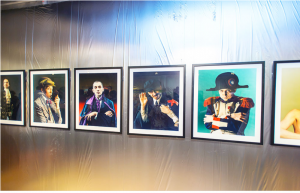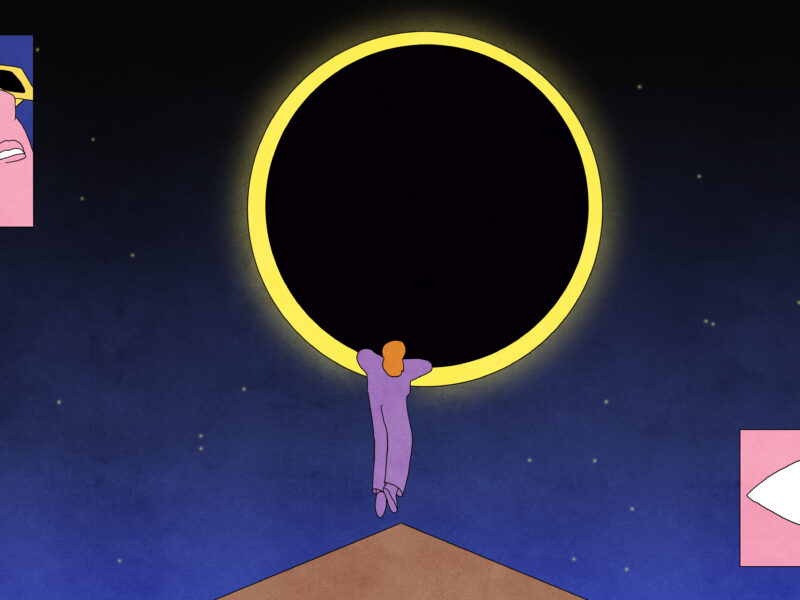In times of repression and despair, art plays an essential role — politically, intellectually, and spiritually
What do Childish Gambino’s “This Is America” and a giant penis on a drawbridge in St. Petersburg have in common?
Both tell us something about the importance of art in political life.
In societies that place a high value on monetary wealth, and which regard not having money as a moral failing, artists, whose careers are precarious, are marginalized. In contemporary America, we like to think that people with the most brains and ambition go into finance, or head to Silicon Valley.
The truth about artists and their function is far more complicated. Russian art is a good example here, because the oppressive mechanisms used against people in Russia are disturbingly similar to those employed by the current U.S. administration and its powerful supporters. The power of these reactionary forces could become even more entrenched after the 2020 election.
It’s undeniable that the current U.S. president’s penis occupies its own space in cultural lore. With that in mind, recall the penis drawing that Voina, the Russian art collective supported by Banksy, drew to taunt agents inside the St. Petersburg headquarters of the FSB, the notorious state security agency. That drawing famously won a state-supported Russian art prize in 2011, despite the official uproar.

The FSB is one of the most feared institutions in Russia. Art critics understood that taunting the successor to the KGB with an enormous image of an erect penis drawn on the bridge outside its headquarters makes an interesting statement. Is that statement juvenile? Yes, it is. But it also identifies the fact that power in Russia, and power in general, is a dick-measuring contest.
Art as catharsis
The immaturity of the gesture is also a statement. In a chaotically repressive country like modern Russia, where self-expression can be an exhausting maze of dead ends because officials have power to make capricious decisions like cutting off an organization’s funding for political reasons, or having someone arrested on trumped up charges, waving a dick at an official organ of the state is catharsis.
Catharsis — and the fearless desire to shock — brings me back to Donald Glover, a.k.a. Childish Gambino, with his tight combination of laughs, parodies of racist fantasies of blackness, unflinching gun violence, and so much more. The song and the video for This Is America unspool into a dissertation’s worth of political commentary. But what ties Glover’s work together is how it elevates surviving malevolent, oppressive conditions into living; it flips the experience of being caricatured into owning the narrative. If you’re looking for ways to understand how important art is to real resistance (not the hashtag kind), this is it.

In an oppressive political framework, the artist occupies an interesting position — and we shouldn’t always assume it to be subversive. All art can be co-opted by a repressive state apparatus, but its meaning and role in history can also change over time.
Art as resistance
One of the most interesting, and sadly overlooked, examples of artistic resistance in practice was the husband and wife team of Arkadiy Aktsynov and Lyudmila Aktsynova. These two talented painters met and fell in love in the Soviet gulag; like millions of other Soviet citizens, the state had sent them there in the 1930s for imaginary crimes. Miraculously, they survived well into the 1990s and left behind a treasure trove of both joyful and contemplative work; their landscapes, which they frequently collaborated on, are a particular favorite of mine. Having been forced out of the Soviet cultural mainstream by the legacy of the gulag, they dedicated their lives and their work to provincial Russia, where they found recognition.
“We were saved by our faith in people and in kindness, and by an immeasurable fury in our work,” they recalled in their jointly authored memoir. The fury was both a symbol of their productivity and their desire to carve out a space for themselves, to create their own landscape, even while they were prisoners hemmed in by barbed wire.

The nature of state oppression is such that it penetrates into all levels of society and all factors of daily life. It seeks to demonstrate that you do not “own” yourself, and do not have a right to any damn landscape — be it outside or in your head. In the Soviet Union, oppression had a totalitarian aspect; it was bloody and brutal at the beginning of the USSR and lackadaisical toward its end. In Putin’s Russia, oppressive measures are frequently random and chaotic, their goal more psychological than ideological, creating a gripping unease that allows a small group of people to casually plunder the country. Yet the mechanisms in both instances remain the same: your life can be changed at any moment, because an official stomped his foot or waved her hand, and you will have little to no recourse in the aftermath.
For Americans who follow Donald Trump’s tweets — i.e. for Americans who until recently had not considered the unpredictable nature of marginalized existence as captured by Childish Gambino — that feeling of instability might suddenly seem familiar.
Art as a teacher
The passage of time meanwhile has a salutary effect on the interpretation of art that was originally created as an act of subversion. The Aktsynovs created art in the gulag as an act of survival. But after the state rehabilitated them in the post-Stalin era, their work became woven into the history of the Soviet nation as a cautionary tale. The message was, “These terrific painters were forced to suffer because our government made terrible mistakes!”
Today, I’m sure that many of the people who admire the Aktsynovs, collect their paintings, and help organize their exhibitions, are also Putin supporters. Putin wouldn’t be a very good authoritarian if he didn’t know how to harness collective complicity. As for what meanings can be gleaned from the Aktsynovs work in the future — and what kind of cultural space they will come to occupy — only time can tell.
The history and fate of dissident artists under repressive regimes might sound discouraging, but it need not be. In fact, it should inspire. An authoritarian can tell you to look or not look at a certain work of art, and tell you how you should feel about it. For example, when Vladimir Putin was elected for the fourth time, Russian graffiti artists co-opted the classical ballet Swan Lake to express a political statement about the decline of Russia’s democracy.

In Nazi Germany, the Nazis banned as degenerate some of the most important art and artists of the nineteenth and twentieth centuries. But you are the one who is responsible for what you feel when you look at a moody rural painting by a repressed artist. I’m specifically using the word “responsible,” because authoritarianism, due to its controlling nature, is ultimately infantilizing; this is something that Childish Gambino captures brilliantly in “This Is America,” by demonstrating how oppressive infantilization was practiced against generations of black people.
In Russia, the late artist Vladislav Mamyshev-Monroe acted as a kind of bridge between the stuffy paternalism of the late Soviet era and the shiny cynicism in the age of Putin. Most people gravitate toward Mamyshev-Monroe’s depictions of male political leaders in bold makeup, and search for very serious political meaning. Mamyshev-Monroe was indeed a serious artist, but my admiration for his work stems from how much fun he had — how expressive, vulnerable, and powerful in his vulnerability this man was, whether dressed in drag to shock the elderly or poking fun at the celebrity cult embraced by Russia’s younger generation.

Art to bind communities
Once, the West exported capitalism to the post-Soviet countries. Now, the former Soviet Union is selling capitalism back to the West in a purer, more vicious form. Donald Trump, the sleazy real estate man who would sell state secrets for the opportunity to build a dubious casino on the banks of the Moskva River, is a good example of this exchange. But this phenomenon is bigger than one individual. It is present in greater social atomization, in greater political extremes, and in our fetishization of voting as a purely individual, consumerist act.
Today, Mamyshev-Monroe is a good artist to turn to if we’re looking for creative ways to respond to seismic changes and growing rifts in our society. He knew how to poke fun while maintaining compassion toward his subject matter, inserting himself into his work not out of narcissism, but a sense of intimacy. In other words, Mamyshev-Monroe observed extremes in society — Soviet bureaucracy, the extravagance of crony capitalism — and sought to contain them, and forge something new out of them. In this light, politically engaged artists are not just cool or interesting. They work to repair the common threads that run through society.
In good times or bad, art is not an escape. It’s about being present. The world being what it is, we end up being present for a lot of crap. Some people will sell you on the idea of art as transcendence, but I think of it as wading through the thick mess of existence alongside other people, reminding them that they are not alone. It’s a silly-sounding issue that is deadly serious: if we’re to make it through our current troubles, and the troubles yet to come, we must connect. We must be there for one another.
Natalia Antonova is a writer, journalist, and editor of Bellingcat. She is currently based in D.C. Follow her on Twitter @nataliaantonova.



